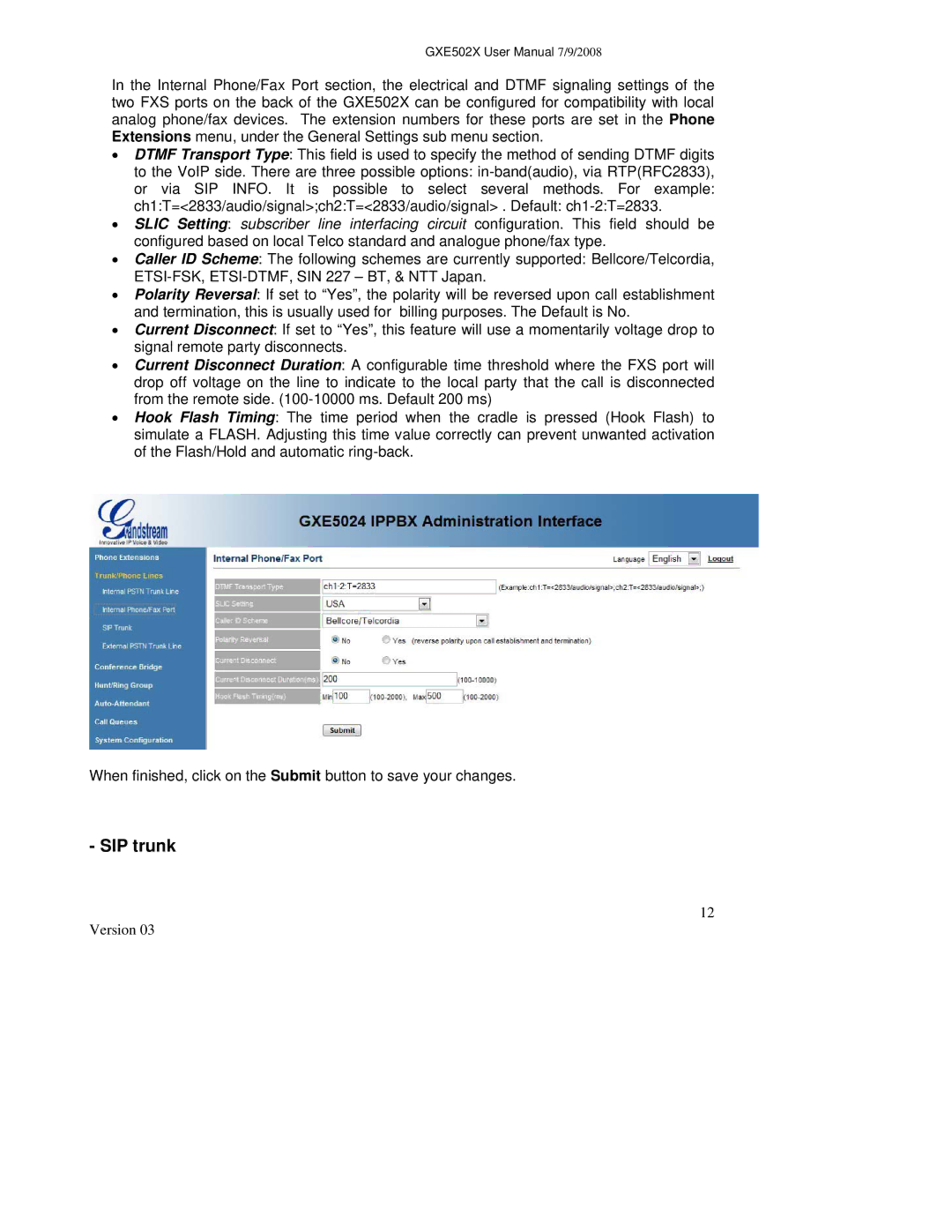
GXE502X User Manual 7/9/2008
In the Internal Phone/Fax Port section, the electrical and DTMF signaling settings of the two FXS ports on the back of the GXE502X can be configured for compatibility with local analog phone/fax devices. The extension numbers for these ports are set in the Phone Extensions menu, under the General Settings sub menu section.
•DTMF Transport Type: This field is used to specify the method of sending DTMF digits
to the VoIP side. There are three possible options:
•SLIC Setting: subscriber line interfacing circuit configuration. This field should be configured based on local Telco standard and analogue phone/fax type.
•Caller ID Scheme: The following schemes are currently supported: Bellcore/Telcordia,
•Polarity Reversal: If set to “Yes”, the polarity will be reversed upon call establishment and termination, this is usually used for billing purposes. The Default is No.
•Current Disconnect: If set to “Yes”, this feature will use a momentarily voltage drop to signal remote party disconnects.
•Current Disconnect Duration: A configurable time threshold where the FXS port will drop off voltage on the line to indicate to the local party that the call is disconnected from the remote side.
•Hook Flash Timing: The time period when the cradle is pressed (Hook Flash) to simulate a FLASH. Adjusting this time value correctly can prevent unwanted activation of the Flash/Hold and automatic
When finished, click on the Submit button to save your changes.
- SIP trunk
12
